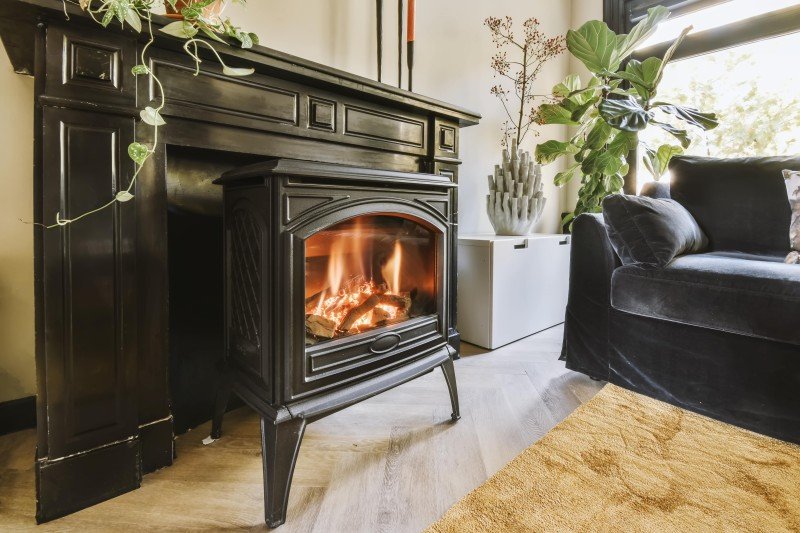Why Fireplaces And Stoves Is Fast Becoming The Trendiest Thing Of 2024?
The Comprehensive Guide to Fireplaces and Stoves
Fireplaces and stoves have actually been important to human civilization for centuries, working as a source of heat, light, and convenience. These home appliances can be found in numerous forms and have actually evolved for many years, dealing with varied choices and technological developments. This article supplies a useful overview of fireplaces and stoves, highlighting their types, benefits, maintenance ideas, and installation factors to consider.
Types of Fireplaces
The world of fireplaces is rich and varied. Here are the most common types:
Wood-Burning Fireplaces:
- Traditional and lovely.
- Needs skilled wood and routine upkeep.
- Produces a pleasant aroma and crackling sound.
Gas Fireplaces:
- Offer benefit and ease of usage.
- Readily available in vented and vent-free choices.
- More efficient and cleaner than wood-burning options.
Electric Fireplaces:
- Provide atmosphere without the need for a chimney.
- Easy to use with remote control alternatives.
- Can be utilized as a supplemental heat source.
Pellet Stoves:
- Use compressed wood pellets as fuel.
- Highly efficient and eco-friendly.
- Frequently geared up with thermostats for temperature level control.
Ethanol Fireplaces:
- Utilize bioethanol fuel, making them portable.
- Do not need venting, which allows for flexible positioning.
- Produce a reasonable flame with very little smoke.
Outdoor Fireplaces:
- Designed for outdoor settings; can be wood or gas-burning.
- Great for entertaining and enhancing backyard visual appeals.
- Often constructed from stone, brick, or metal.
Benefits of Fireplaces and Stoves
Including a fireplace or range into a home provides various benefits:
- Aesthetic Appeal: Fireplaces work as striking focal points in any space, including warmth and character to home decoration.
- Increased Property Value: Homes with functional fireplaces tend to have higher resale worths.
- Energy Efficiency: Modern fireplaces and stoves are developed to be more energy-efficient, which can lead to decreased heating costs.
- Backup Heating Source: In case of power failures, wood-burning and gas fireplaces can serve as necessary heating sources.
- Versatile Heating Solutions: Different types of fireplaces accommodate numerous heating requirements and lifestyles, from cozy ambiance to efficient heating.
Type of Fireplace/Stove
Fuel Source
Efficiency Rating
Maintenance Level
Wood-Burning
Wood
Moderate
High
Gas
Natural gas/LP
High
Low
Electric
Electricity
High
Very Low
Pellet
Wood pellets
High
Moderate
Ethanol
Bioethanol
Moderate
Low
Outdoor
Wood or gas
Moderate
Varies
Upkeep Tips
Correct maintenance extends the life of fireplaces and stoves, guaranteeing safety and efficiency. Here are some important ideas:
Regular Cleaning:
- Wood-burning fireplaces must be cleaned after a full season of usage to remove soot and creosote.
- Gas fireplaces need regular evaluation of the burner and vents.
Routine Inspections:
- Have chimney sweeps carry out annual examinations to determine blockages or structural damage.
- Check the seals and gaskets on gas systems to prevent leakages.
Fire Safety:
- Install smoke and carbon monoxide gas detectors in homes with fireplaces or stoves.
- Keep a fire extinguisher near the fireplace or stove for emergency situations.
Usage Quality Fuel:
- For wood-burning systems, constantly use skilled wood; prevent treated or painted wood.
- When using pellets, guarantee they are stored properly to prevent moisture absorption.
Handle Airflow:
- Keep vents and ducts clear to promote efficient ventilation and airflow.
- Think about using glass doors or screens to lessen particles and ash in the living space.
Installation Considerations
Setting up a fireplace or stove needs cautious factor to consider of a number of elements:
Location:
- Choose an area that permits proper clearance and ventilation.
- Think about the layout of your home and the convenience of natural heat circulation.
Structure Codes and Permits:
- Check local guidelines relating to installations and essential licenses.
- Engage an expert to guarantee compliance with safety requirements.
Fuel Type:
- Evaluate your fuel alternatives based on schedule, expense, and ecological effect.
- If choosing for gas, ensure existing gas lines can accommodate the new device.
Ventilation:
- Proper venting is important for security and efficiency, particularly for gas and wood-burning units.
- Speak with a professional to identify the best venting solution.
Visual Consideration:
- Select a design that complements your home's interior.
- Think about mantels, surround materials, and colors that match your design.
FAQs
What is the very best kind of fireplace for heating?
Gas fireplaces are generally more efficient for heating, while wood-burning fireplaces offer more ambient heat.
How often should I clean my fireplace?
Wood-burning fireplaces must be cleaned up a minimum of once a year, while gas fireplaces require less regular attention depending upon usage.
Can I install a fireplace myself?
While some property owners may try DIY setup, it is advised to work with a professional to make sure security and compliance with building regulations.
Are electric fireplaces efficient?
Yes, electric fireplaces are really efficient and can work as reliable supplementary heating sources, especially in smaller spaces.
What is the life-span of a fireplace?
The life-span of a fireplace differs depending on the material, type, and maintenance; however, a well-maintained wood-burning fireplace can last over 30 years.
Fireplaces and stoves remain timeless functions in homes, using warmth and ambiance. Understanding Buy Fireplaces Online , benefits, and upkeep requirements can help property owners make notified choices about setup and care. With mindful preparation and regular maintenance, these devices can improve both the convenience and value of a home for several years to come.
